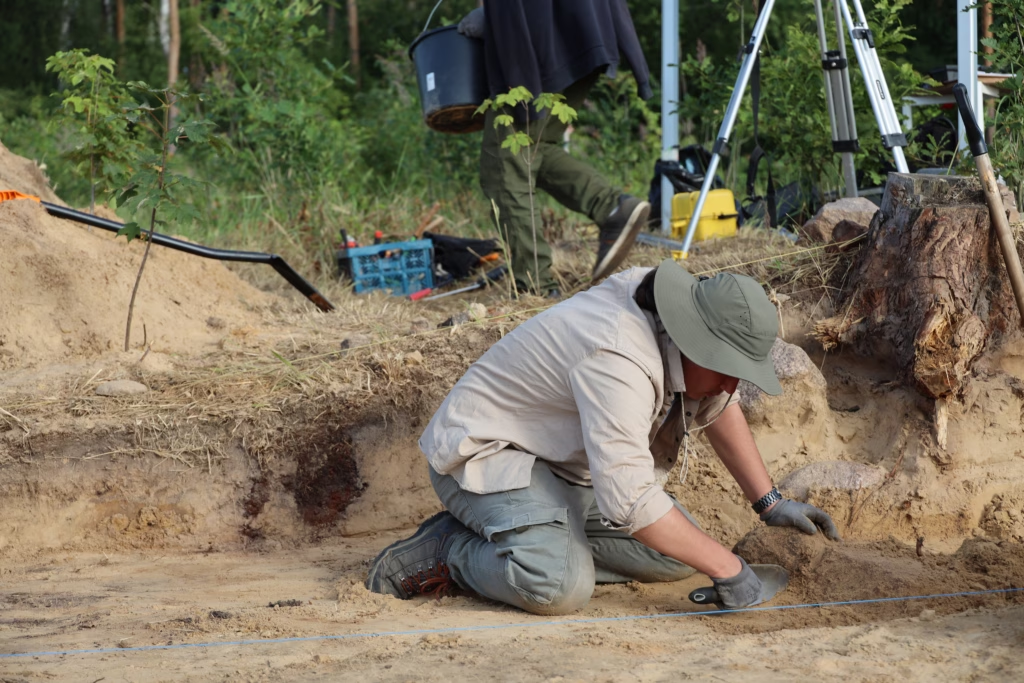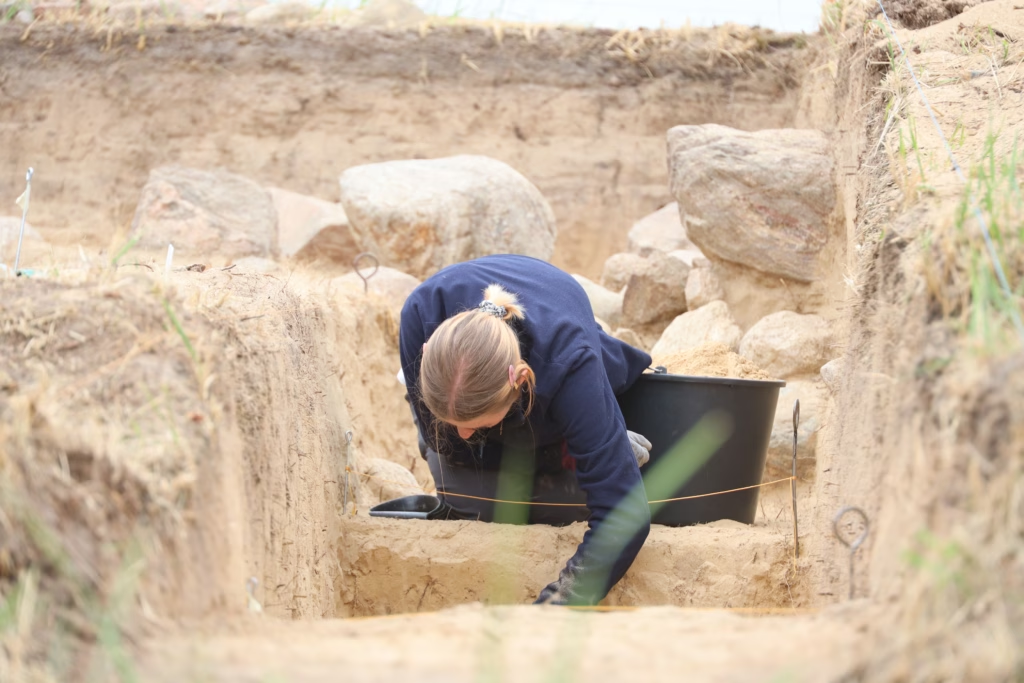Archaeologists have uncovered monumental megalithic tombs dating back 5,500 years in the Wyskoć area of Kościan commune, located within the Gen. Dezydery Chłapowski Landscape Park in Greater Poland (Wielkopolska). The structures are believed to have been built by the Funnelbeaker culture, a Neolithic society that once flourished in this region.
Monuments of Prehistoric Poland
These elongated earthen mounds, often referred to as “Polish pyramids” or “giants’ beds,” represent some of the largest prehistoric sepulchral constructions in Poland. Known as “Kujawy-type megaliths,” they were typically trapezoidal in shape, stretching up to 200 meters in length, and were oriented with their wide stone-fronted side facing east.
The newly discovered tombs were first identified through landscape remote sensing by experts from the Greater Poland Landscape Parks complex (ZPKWW). Excavations followed under the direction of Dr. Danuta Żurkiewicz and Prof. Iwona Sobkowiak-Tabaka from Adam Mickiewicz University in Poznań.
Neolithic Burial Practices
According to researchers, these megaliths likely served as burial places for prominent members of Neolithic society—such as leaders, shamans, or spiritual figures—despite the generally egalitarian nature of the Funnelbeaker culture. The deceased were typically laid on their backs with feet pointing east, and buried with grave goods including stone axes, pottery, and possibly copper ornaments.

Although the skeletal remains may not have survived due to the passage of time, archaeologists believe the associated grave offerings might still be preserved. Items such as decorated ceramic vessels—including the distinctive “flask with a flange” believed to indicate opium use—are among the potential finds.
Stone Structures Altered by Time
“The largest stones that once formed the massive eastern fronts of the megaliths are now gone, likely removed and reused over centuries,” explained Artur Golis, chief nature and landscape protection specialist at ZPKWW. “However, we were able to clearly document the stone settings that once stabilized these structures.”

A Growing Network of Megaliths in Poland
Until recently, such structures were virtually unknown in this part of Poland. That changed in 2019 when researchers discovered five similar megalithic tombs near Rokietnica through aerial laser scanning (ALS). Excavations confirmed that the unusual landscape patterns were indeed prehistoric tombs. Other sites have since been identified in the village of Sierpówek, Szamotuły commune.
In Wyskoć alone, five promising structures have been detected, with two now excavated. These findings mark another significant chapter in the ongoing exploration of Poland’s Neolithic past.
Cover photo description:
Stone remains of a megalithic tomb discovered in Wyskoć, Kościan commune, within the Gen. Dezydery Chłapowski Landscape Park. The tomb dates back over 5,500 years and was likely built by the Funnelbeaker culture. Photo credit: Zespół Parków Krajobrazowych Województwa Wielkopolskiego (ZPKWW)





